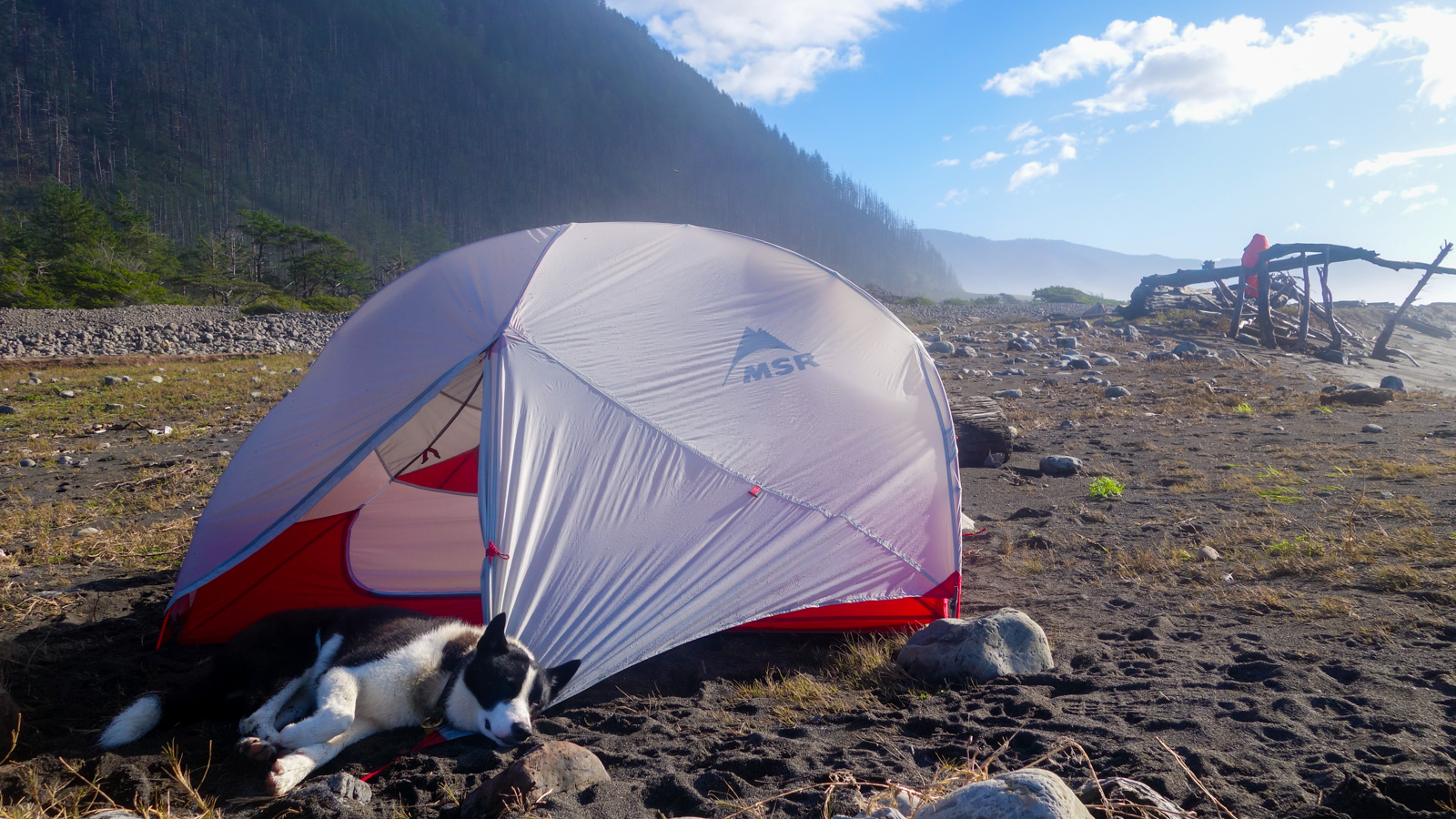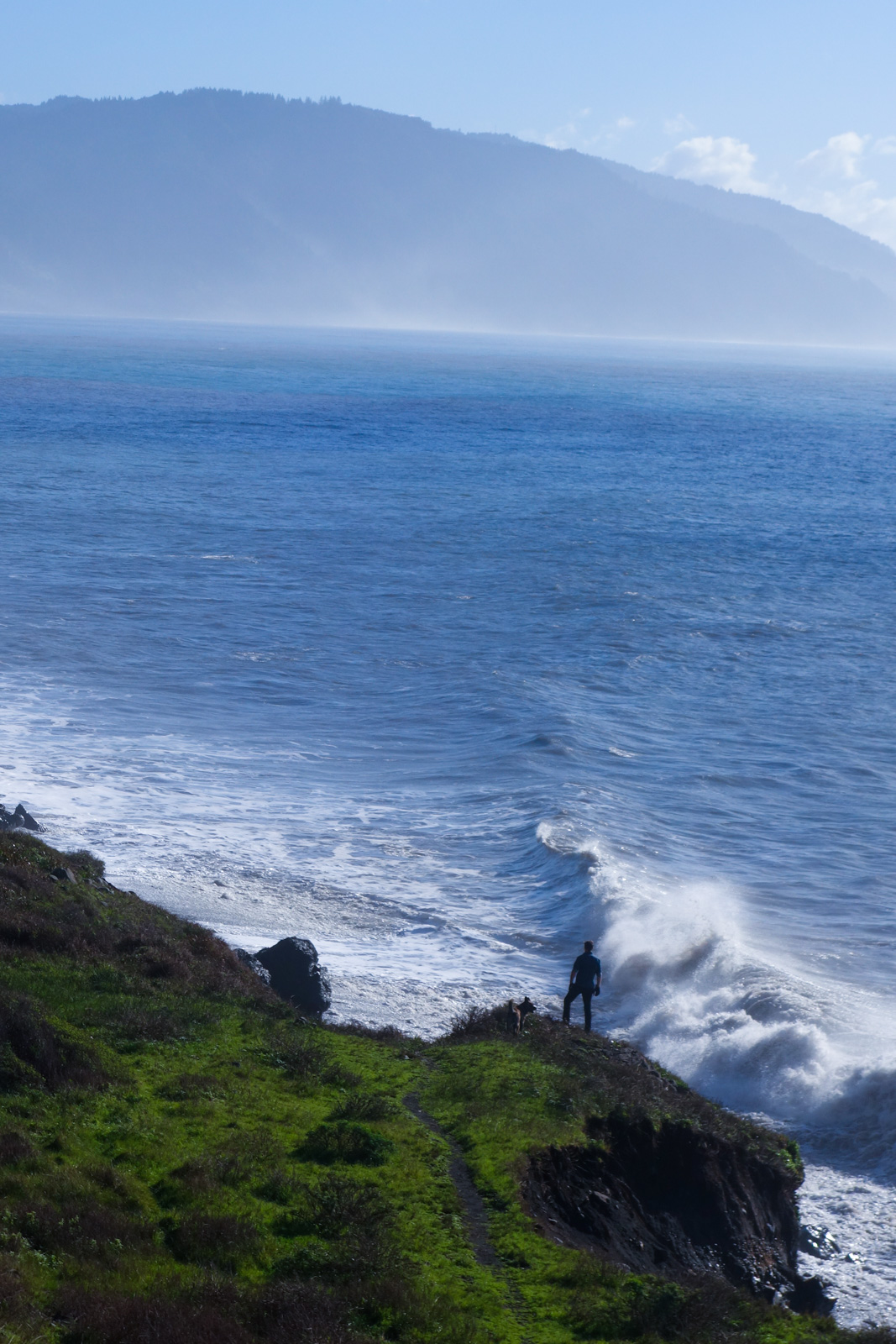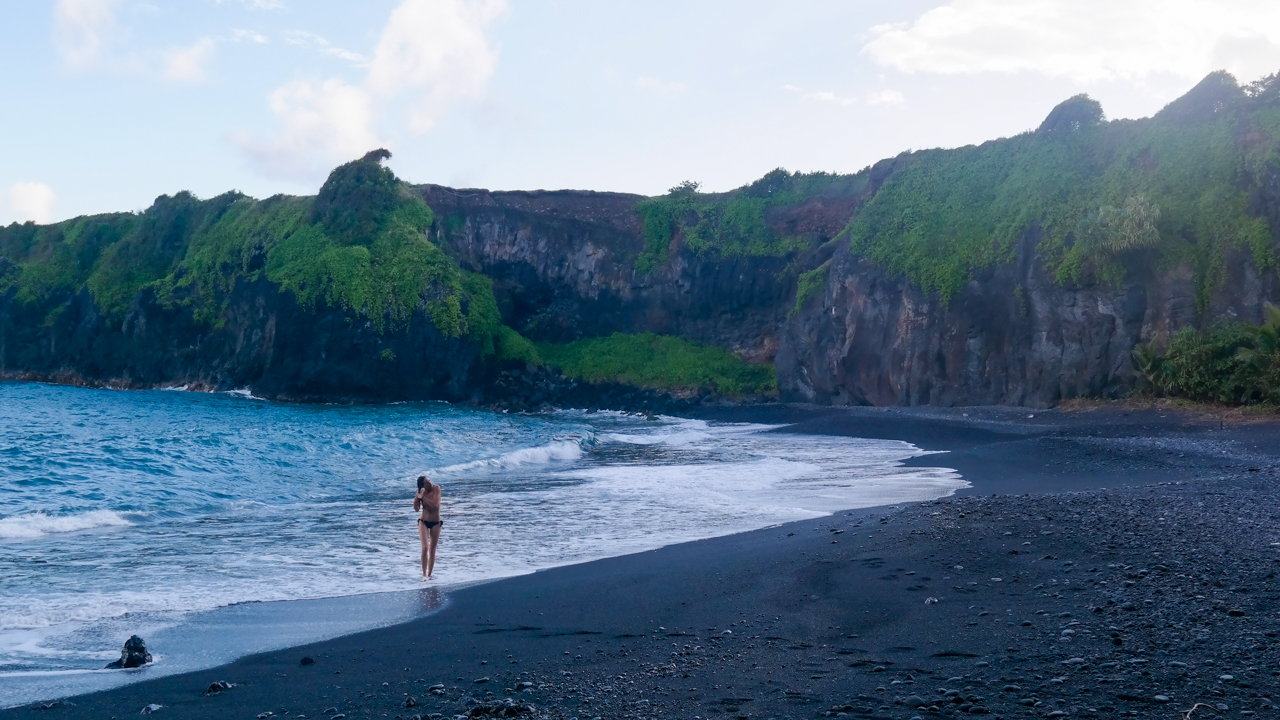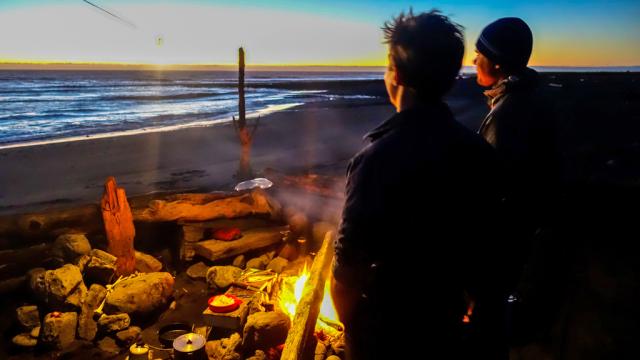It’s (almost) summer. You want to go camping. You want to go to the beach. Why not do both at once? Get it right and beach camping is the best thing you’ll ever do.
Where To Camp
If this is your first time camping, save yourself a lot of hassle and visit an organised campsite. They will have things like safety and toilets and running water that will make your weekend go an awful lot smoother.
The rest of you are going to want to get as remote as possible. To do that, you’ll need a boat, a backpack or a capable 4WD vehicle. You’ll also need an area where camping on or adjacent to the beach is permitted. Research your state, region or area of travel to find beaches where you can camp, or just head for the sticks. (In NSW, for example, you can look up the National Parks and Wildlife’s camping and accomodation section.)
While you probably do want to set up camp on sand, you probably don’t want to do it just out in the open, exposed in the middle of the beach. There, you’ll find no shade, high winds and people will be able to see you from miles away. A much better place to put your tent is where the vegetation meets the sand. This gives you natural concealment, shelter from the wind and rain and probably also firmer soil to stake down in.
Please, never camp or trample through sand dunes off established trails. They’re incredibly fragile environments that many species of animal rely on for habitat.
If the beach is rocky, moving back to the vegetation should help you find a softer surface to sleep on as well.
Make sure you don’t go too far into the trees or brush though, a little bit of wind will keep the bugs off.
Never, ever camp below the high-tide line. Look up local tide charts so you can predict unusually high ones and when they will occur. Give yourself plenty of extra space back from that high tide line while you’re at it, just to be safe.
What Kind Of Shelter Do You Need?

Depending on the bug situation where you’re going, you may be best served by a floorless shelter such as a tarp or mid (think a pyramid-shaped tarp) that uses a single, center pole for support. That way the sand is your floor, but a rug will help keep your sleeping situation and stuff clean.
If there are bugs, you’ll want a tent. Look for one with a total-mesh body for good ventilation, but a rainfly that stretches all the way to the ground for adequate protection from storms. You’ll want that tent to have a larch porch area, again for hanging out and cooking in during those storms, or you’ll want a separate tarp to create similar.
Put a small rug outside your tent door and keep your footwear outside. This will help keep sand out of the tent. But, sand will get in. A little hand broom and dustpan will help keep the inside tidy.
Couples will want a big, queen-sized air mattress. Put a fitted sheet on top of it to provide a comfortable sleeping surface, then just pack a blanket or two. Polyester ones from a big-box store are cheap, warm, water resistant and easy to clean. Just beware that beaches are both windy and next to the water, so they can get surprisingly chilly at night, even in summer.
If you’re sleeping on your own, you should still pack some type of sleeping pad. They just really ramp up comfort.
Bonus points if your shelter can provide shade during the day. That’s where the versatility of backpacking tarps can really come into play.
Pack some low-to-the-ground chairs too, you’ll want a comfortable place to eat, drink and watch the sunset.
Dedicated sand stakes are available that work pretty well in soft, deep stuff. You can also dig a trench, tie onto a stick, then bury it. Or fill bags with sand and bury those, you get the idea.
Going To The Bathroom

In very remote areas, where people are rare, the best way to dispose of your poop may simply be to dig a shallow hole below the hide tide line, then let the ocean deal with it. Anywhere else, you’ll either need to walk into the bush and follow general bush-pooping guidelines or pack it out.
Please, please, please consider both the health of the environment and other people when you’re choosing where and how to do your business. In areas without much rainfall, there’s virtually no rain to wash away your disgusting mess, so just pooping in the bushes and leaving wads of toilet paper laying around ruins that area for the next visitors. Observe local guidelines and recommendations. Clean up after your dog, too. People are going barefoot here!
Fires And Cooking

Windy places are difficult places to have a fire. Take a shovel and dig a hole, then put your fire in it. To cook on it, steel the grate off your grille at home or poke two long, sturdy, green sticks in the ground to form an inverted V over the fire and hang pot from that.
A fire can smolder under sand for a long time and potentially injure people. Put it all the way out with buckets of seawater before burying the ashes.
Stoves, too, will need some kind of windbreak. Another good reason to set up in trees or similar. Or use your tent’s porch or that tarp, just taking care to be safe with that flame. Never use a stove inside a tent, you’ll die from carbon monoxide poisoning.
Be careful in your beach’s environment. What little vegetation there is likely produces very little firewood, so don’t gather if it’s scarce. Driftwood often doesn’t burn very well, the longterm soaking in the ocean just seems to either make it permanently damp or so cork-like that it doesn’t have enough substance to burn.
Taking advantage of a beach’s ample food sources is one of the most rewarding parts of beach camping. Surf casting, clam digging, spear fishing and shellfish diving are all possible, depending on where you’re going and during what time of the year. Look up local fish and game resolutions, arrange licenses ahead of time and observe seasons for shellfish. Go armed to cook them, but pack backup food in case you come away empty handed, too.
Driving On Sand

It’s really not hard and pretty much any vehicle can handle it — although a 4WD is always preferable. Just air down your tires to between 12 and 20psi before you enter anything soft and deep and maintain your momentum through similar terrain. Switch off traction control; wheelspin is your friend!
If you plan to do this in a remote area, away from a friendly tow, you’ll need to be able to guarantee you won’t get stuck. In my Subaru Outback, I do this with the aid of an inflatable ARB X-Jack, a full-size shovel and a pair of MaxTrax. When a vehicle becomes stuck, you need to put traction aids under its driven wheels. The inflatable jack is there to lift those wheels clear and the MaxTrax are there to shove under them so I can drive out.
The shovel helps excavate wheels, move materials like rocks to create a runway of traction and to clear obstacles. I also carry a tow strap and two D-shackles in case I need to help someone else or so I can recruit help from someone else. In fact, all that stuff is always a good idea anytime you’re leaving a paved road.
If you’re buying tires with this job in mind, all-terrains work better than mud-terrains. The smoother tread just seems to float better. But really, it’s airing down and the subsequently enlarged footprint that makes sand travel possible.
Safety

In a remote area, lifeguards won’t be on watch, your phone won’t have reception and any help of any kind will be hours, if not days, away. So — make more conservative choices, use the buddy system and have an action plan in place to deal with emergencies.
This is much, much more important if you’re getting in the water. When I beach camp in groups, I like to designate a person to act as lifeguard and either sit in a kayak or watch from the beach as people swim, dive and fish. By myself or with the girlfriend, I just make sure everyone is comfortable with what they’re doing, knows first aid, CPR and rescue swimming and that I don’t get over my head.
Out in the hot sun, hydration also becomes a major issue. Each person should pack and plan to drink at least four litres of water per day, with at least a four litre reserve to be safe. That’s water, not soft drinks or alcohol; drink that four litres in addition to anything else.
Make your own comprehensive first aid kit tailored to your individual needs and know how to use it.
And please leave any place you camp cleaner than when you found it. If we all do that, then we’ll all have pretty places to go that aren’t covered in wads of used toilet paper.
IndefinitelyWild is a publication about adventure travel in the outdoors, the vehicles and gear that get us there and the people we meet along the way. Follow us on Facebook, Twitter, and Instagram.
